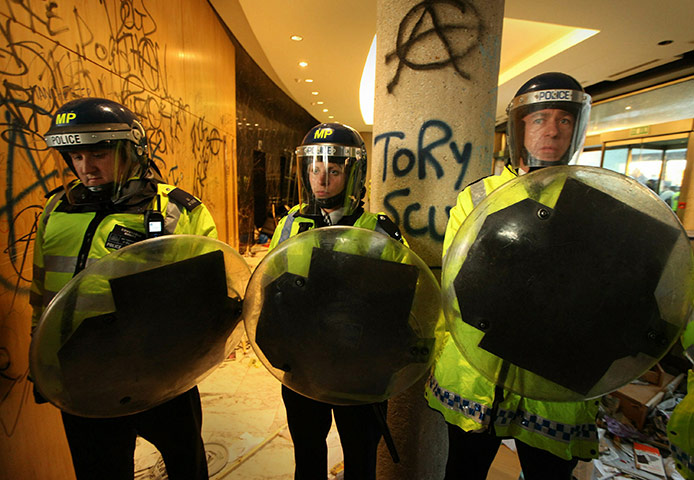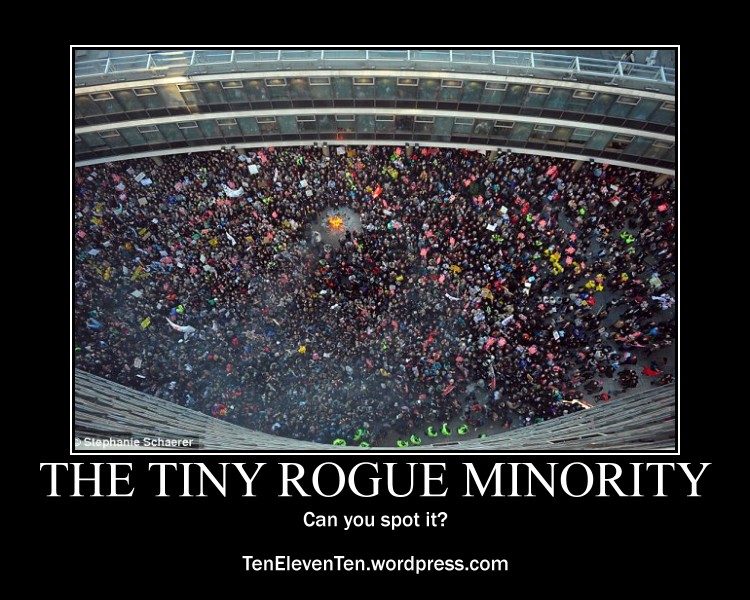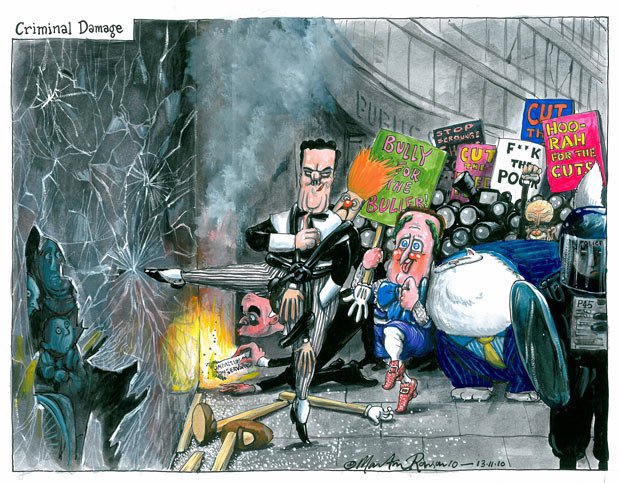Wednesday 10th of November saw over 50,000 students march through the centre of London in opposition to the proposed raising of tuition fees to £9,000. The demo had been called by the National Union of Students (NUS) and the University and College lecturer’s Union. (UCU) The organisers were said to have been expecting around 12,000 people to take part but they under estimated the scale of opposition to this clearly classist policies which would make higher education only available to the richest in society. The 50,000+ crowd snaked its way through London stopping at 10 Downing Street to chant some abuse, then stopping by the parliament building and then proceeding past Millbank tower which houses the Conservative Party’s campaigning office. Once the march was passing the Millbank tower a bloc of anti-capitalist students splintered from the main march towards the reception area of the tower and forced their way in and opened the doors to the rest of the protestor many of whom looked sheepishly at each other for a minute but eventually began to flood in with ever increasing confidence. Once the example had been set thousands began to enter and spread until the whole courtyard was occupied and people began to enter and smash the offices, occupying the building and the roof tops.
The corporate media, the government and even the National Union of student’s president were quick to blame the actions on a “small rogue minority” of “socialists and anarchists who led the nice middle class kids astray, despite the participation of an estimated 5000+. (Around 10% of the march) The “despicable ,“ “mindless,” “hardcore” mob “hell bent on destruction and chaos” was mostly made of school, college and university students many of whom professed to this being their first political protest. This action was bigger than just the issue of tuition fees; it was a manifestation of years of years of undemocratic rule, unequal opportunity and frankly a refusal to accept a system that most people clearly see as rotten and working against them.
The analysis by Last hours is an excellent summary of the issues raised:
During yesterday’s protest against cuts to education crowds stormed Tory headquaters. Windows where smashed and offices destroyed. As a result we can witness the capitalist system bend and buckle in its attempts to dismiss these acts of anger as illegitimate.
Amongst the 1,000s that played some role in the invasion of Millbank Tower, where workers and students from all areas of society. We condemn both the media claim that a small group of anarchist antagonists where responsible (juxtaposed by their own images showing thousands rallying around the building) as well as the notion that the students involved are part of a privileged class. The idea that working class youth are some how exempt from the desire for education is both naive and patronising.
In fact, on the day anarchist attempts to form a visible block failed in comparison to other recent protests. Instead symbols of an anarchist presence could be seen peppered throughout the crowds, mingling with the masses. A sign that anarchist theory has embedded itself well amongst current student communities and individual anarchists would rather march within the safety of friendship groups than along obscure political allegiances.
There was a common feeling that this protest represented more than just anger towards a rise in tuition fees. Many non-aligned individuals seemed furious at finding themselves with a political system that does not represent them. Indeed those that have profited for so long off of the broken backs of the poor are growing concerned.
Though some claimed the success of the demonstration was down to students listening to ‘impassioned speeches’ on the day most quickly grew tired of so called leaders talking for them and moved back to Millbank Tower to either watch or take part in the invasion. The NUS’ attempts to control the protest, and later their condemnation of the days actions, can only be seen as an attempt to fulfill their own political agenda. This agenda aims to channel anger back into a broken, hierarchical political system and as a result such organisations should be considered part of the problem.
In reaction to arrests and the following media hysteria, a campaign has been launched to support those involved. It is important at this point, to send a message that those willing to fight will be supported. Building networks and communities of solidarity are as an important part of the struggle as any other.



